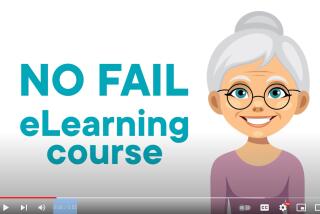Riding a Bumpy Road : Driver Training Schools in State Fall on Hard Times
- Share via
The fast lane to success was wide open when Oscar Leong started his own driving school in the early ‘70s, but now the road to riches is jammed with competitors.
Twenty years ago, Leong had few rivals and plenty of student drivers. But today, Oscar’s Driving School in Chinatown must fight with more than 100 schools for customers. As a result, Leong has had to slash his teaching staff to two, from 16. With driving school revenue at a trickle, Leong runs an income tax service on the side.
“Business is no good anymore,” Leong said. “People cannot survive on running a driving school alone--not without a struggle.”
The reason: A buildup of driver training schools in recent years has led to a glut in California--forcing owners to trim or shut down their operations as new competitors continue to enter the market.
“It’s a matter of simple supply and demand,” said Roger Kraft, president of Drive Time Driving School in Fullerton. “There are just too many schools competing for too few students.”
In 1993, the number of licensed schools in California hit 350--second only to the 621 in New York, which faces a similar oversupply. Illegal operations have mushroomed in recent years, according to the Driving School Assn. of California, as have schools that target immigrant groups.
Three years ago, few in the industry would have predicted hard times. In fact, many owners expected a jump in business from teen-agers, their primary customers, after the state stopped funding free driver training in public high schools. New driving schools started up; established ones hired instructors.
But the boom never materialized, and divvying up the market into so many pieces has forced schools to cut back. California Driving School, once the state’s largest with 82 instructors, has pared its teaching ranks to 28. Other operations have gone bankrupt; the latest victim of note was Canoga Park-based Teen Auto Club, which closed in October after 22 years in business.
Efforts by some schools to increase advertising, especially in high school newspapers, have met with only limited success.
“In this recession, people are more concerned with putting food on the table than paying for driving lessons,” said George Hensel, author of the textbook “Happiness Is Having Your Own Driver’s License” and owner of the California Driving School. “Many people regard it as a luxury.”
Despite the glut, new schools are still opening and gaining market share. Some do so legitimately, primarily by offering instruction to immigrants in their native languages--from Spanish and Korean to Armenian and Tagalog.
“In this city, people speak so many different languages. As a driving school instructor, you have to also, so you can compete,” said Leong, whose school prospered from teaching primarily Chinese immigrants in the ‘70s and ‘80s. “People are drawn to your business if you can speak their language.”
But many of the new schools in Southern California compete by operating without insurance or state licensing, which lets them charge prices as low as $60 for six hours of instruction. Comparable lessons at most legitimate schools cost between $150 and $300.
Complaints about fly-by-night operations are up, said Vito Scattaglia, an investigator with the Department of Motor Vehicles. And almost all of them come from the owners of licensed schools facing dwindling enrollments.
“The competition is getting to them,” Scattaglia said. “When everybody’s making money, nobody’s going to complain. Now, all of a sudden, the owners are starting to become more vocal about it.”
The fight for students has also pitted driving school owners against the public schools. Many public systems, including the Los Angeles Unified School District, began charging for driver training after they lost state funding in 1990. But lawsuits by the Driving School Assn. of California have forced them to offer the courses for free or not at all. In 1992, a court said driver training fees in public high schools violate a clause in the state Constitution that provides for free education.
But despite the legal victories, most driving schools have seen no increase in business. As it turns out, many teen-agers are waiting until they turn 18 to get their driver’s licenses, according to the DMV. Adults aren’t subject to the driver training requirement, and school owners speculate that some teens, or their parents, want to avoid paying for driving lessons altogether.
“People have changed their minds about driving lessons,” Leong said. “They’re all trying to learn by themselves.”
That attitude is worrisome, school operators say, for reasons beyond the bottom line. Many observers say driving without a license is on the rise--especially among teen-agers. And, even if motorists have a license, school owners say drivers rarely receive enough safety training if taught by friends or relatives.
“Business keeps going down year after year,” Leong said. “But maybe it’s worse for people on the road.”






